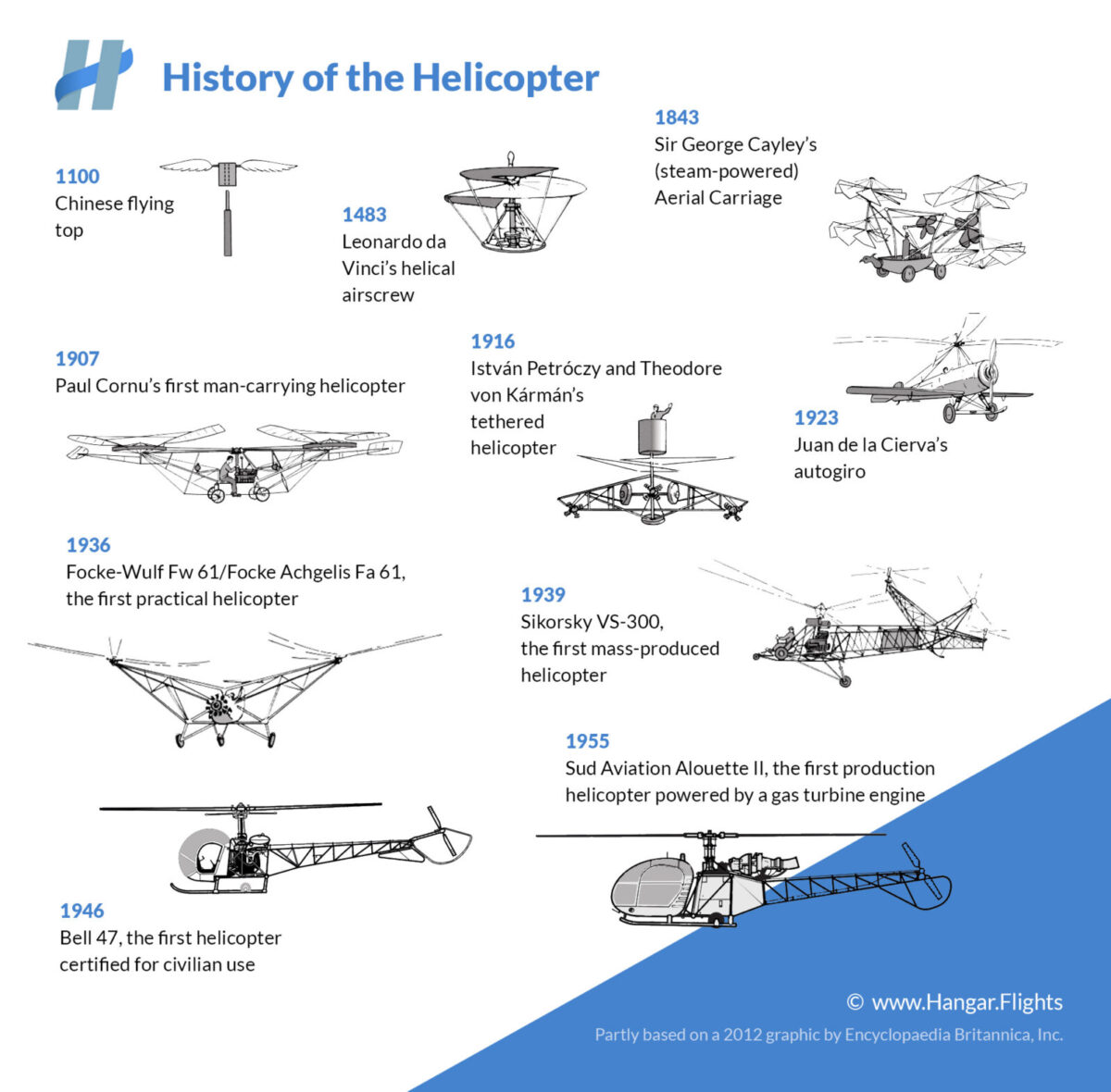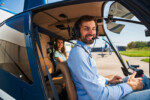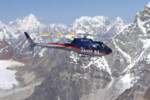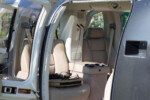Who Invented the Helicopter and When? Exploring Helicopter History
17 November 2021 | Updated on February 05, 2024
Helicopters are one of the most remarkable developments in aviation history, especially when you consider the complexity of their design and aerodynamic characteristics.
Today, helicopters are state-of-the-art flying machines offering unmatched flexibility in a wide range of applications; from military attack and support to emergency medical evacuation and search-and-rescue operations. However, the helicopter is still a relatively young invention when compared to other forms of flying machines such as fixed-wing aircraft or airships.
But who invented the helicopter? And when was the helicopter invented? This post will provide a brief overview of the fascinating history of helicopter flight, as well as some insight into the inventors and the first helicopter models in existence.
The First Helicopters Concepts
History tells us that the first concept of men trying to defy gravity and actually fly was through a helicopter flight. Accounts date way back to 400 BC in ancient China with a hand-spun toy made from a stick and feather that flew when rapidly spun between palms to generate enough lift and then released.


1100 – Chinese top
However, the very first, more realistic concept of a helicopter dates in the 15th century when Leonardo Da Vinci attempted to produce a working helicopter (gyroscope). While Da Vinci’s sketches revealed an understanding of how helicopters work, he never built one, as his sketches were noted to be way ahead of his time. The period had inadequate technology and understanding about the nature of lift and the availability of a machine that could create such a massive lift.


1483 – Leonardo da Vinci’s helical airscrew
Over the course of several centuries, numerous other attempts had been made. All of these had failed. The reason? Same as that of Da Vinci’s time. From the time of Da Vinci up to the end of the 19th century, there were no adequate machines powerful enough to generate the necessary power and create lift for a heavy machine. But nevertheless, all failed attempts had made significant contributions to the progress of the helicopter.
The breakthrough came when the internal combustion engine was invented and made full-size prototype production a possibility. In 1843, English engineer Sir George Cayley (who’s also said to be the first person to identify the four aerodynamic forces of flight — weight, lift, drag, and thrust — and their relationship) designed a convertiplane model called the “Aerial Carriage”.
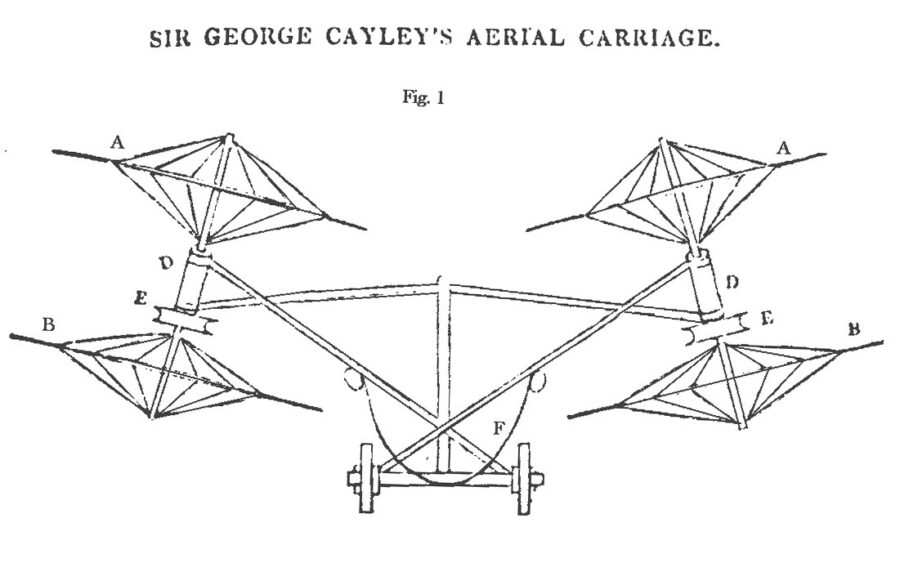

1843 – Sir George Cayley’s (steam-powered) Aerial Carriage
Here, he was genuinely too far ahead of his time. Lighter-than-air machines such as balloons were, of course flying successfully. Heavier-than-air machines required power, and the only power available at that point was that produced by the emerging technology of steam. He did give some consideration to using a Boulton and Watt steam engine for powering an aircraft.
More significantly, with remarkable prescience, Cayley foresaw and even described the principles of the internal combustion engine. He made attempts to invent hot air engines, using various power sources including gunpowder. Had there been a lightweight engine available to him, Cayley would almost undoubtedly have created the first manned and powered aircraft. (Source: historic-uk.com)
But then, problems after problems occurred with all the different models and concepts being developed. With little understanding of the concept of torque and balance, all the initial attempts failed. Models tend to flip over, others couldn’t be controlled in mid-air. Many would not even get off the ground in the first place.
The First Working Helicopters
The break came in July 1901, when Hermann Ganswindt’s helicopter made its maiden flight in Berlin-Schöneberg, which is likely to have been the first heavier-than-air motorized flight with people.
In 1907, French pioneer Paul Cornu created a twin-rotor helicopter that lifted 1 foot off the ground for about 20 seconds. That event was followed by other successful tests but not until 1924 when another French by the name Etienne Oehmichen made a historic helicopter flight that lasted for 7 minutes and 40 seconds.


1907 – Paul Cornu’s first man-carrying helicopter
On May 4, 1924, Mr. Oehmichen was the first person to fly a triangular circuit of about 1 km (0.6 miles) in a helicopter, resulting in a $90,000 price. Shortly after winning this prize, he was also the first person to achieve rotary flight carrying 2 passengers.
Others came to follow these two Frenchmen. Boris Yuriev and Geogrij de Bothezat (Russian), Ellehammer (Dutch), Louis Brennan (Briton), Pescara ( Argentina ), D’Ascanio (Italian), and Juan de la Cierva (Spanish) are among other pioneers who came up with their own version of a helicopter.
In 1916, a different helicopter concept was being proposed by Austro-Hungarian Army Colonel István Petróczy. He proposed an electrically driven rotorcraft to replace the dangerously flammable observation balloons used at the time for meteorological observations.
Experiments conducted with large propellers concluded that those available at the time were too inefficient. Thus a study on efficient big propellers for use as rotors began at Fischamend Airfield in Germany. Dr. Theodore von Kármán led the research group at Fischamend, and Ensign Vilém Žurovec was an engineer there.
A year later, in 1917, their technology was ready and two rotary-wing planes were produced under separate initiatives, the PKZ-1 and PKZ-2. Both types hovered briefly while tethered, though they were barely controllable even with the tethers, and required skilled handling of those tethers.
(PKZ was the abbreviation for Petróczy, Kármán and Žurovec)


1916 – István Petroczy and Theodore von Kármán’s tethered helicopter
The first practical rotorcraft was developed by Spanish aeronautical engineer and pilot Juan de la Cierva in the early 1920s, making him the father of the autogyro. In 1928, de la Cierva flew an autogyro from London to Paris, becoming the first person to cross the English channel in a rotorcraft.
In 1934, an autogyro became the first rotorcraft to successfully take off and land on the deck of a ship, after several years of development. During the Asturias revolt that same year, Spain was the first country to deploy an autogyro for their military.
Though lacking true vertical flight capability, the autogyro served as the basis for future helicopter development.
In 1936, with the German Focke-Wulf Fw 61 introduction, the concept of practical (true) vertical flight became a reality. Heinrich Focke had purchased a license from Cierva Autogiro Company (Juan de la Cierva’s company), which included “the fully controllable cyclic/collective pitch hub system.” In return, Cierva Autogiro received a cross-license to build the Focke-Achgelis helicopters. Focke designed the world’s first practical transverse twin-rotor helicopter, the Fw 61, which was hailed as the very first practical helicopter that rose as high as 11,243 feet and as far as 143 miles.
The Focke-Wulf Fw 61 was also known as the Fa 61, as Focke began a new company — Focke-Achgelis.


1936 – Focke-Wulf Fw 61, the first practical helicopter
First Mass-Produced Helicopters
In the United States, Russian-born engineer Igor Sikorsky made the first mass-produced helicopters. In 1939, Sikorsky built a simple, single rotor helicopter, called the VS-300. After experimenting with configurations to counteract the torque produced by the single main rotor, Sikorsky settled on a single, smaller rotor mounted on the tail boom. The VS-300 turned out to be the first practical single lifting-rotor helicopter design.
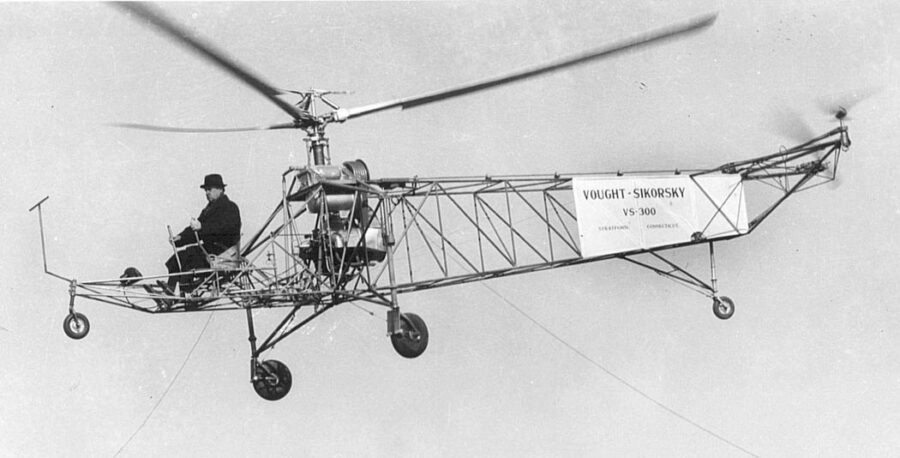

1939 – Sikorsky VS-300, the first mass-produced helicopter
Sikorsky went on to develop the R-4, an improved version of the VS-300, which became the first helicopter to reach full-scale production in 1942, with a production order for 100 aircraft. Before the R-4 was replaced by later models like the R-5 and R-6, 131 helicopters of the type were produced. Sikorsky produced over 400 helicopters before the conclusion of World War II.
While Sikorsky built his helicopters for the military, Bell Aircraft hired engineer Arthur Young to assist develop a helicopter using his two-blade teetering rotor design, which utilized a weighted stabilizer bar positioned at a 90° angle to the rotor blades. Young’s invention evolved into Bell’s Model 30, which in turn later evolved into the well-known Bell 47, becoming the first helicopter certified for civilian use in the United States. The Bell 47 was the world’s most popular helicopter model for almost 30 years, having been built in several countries.
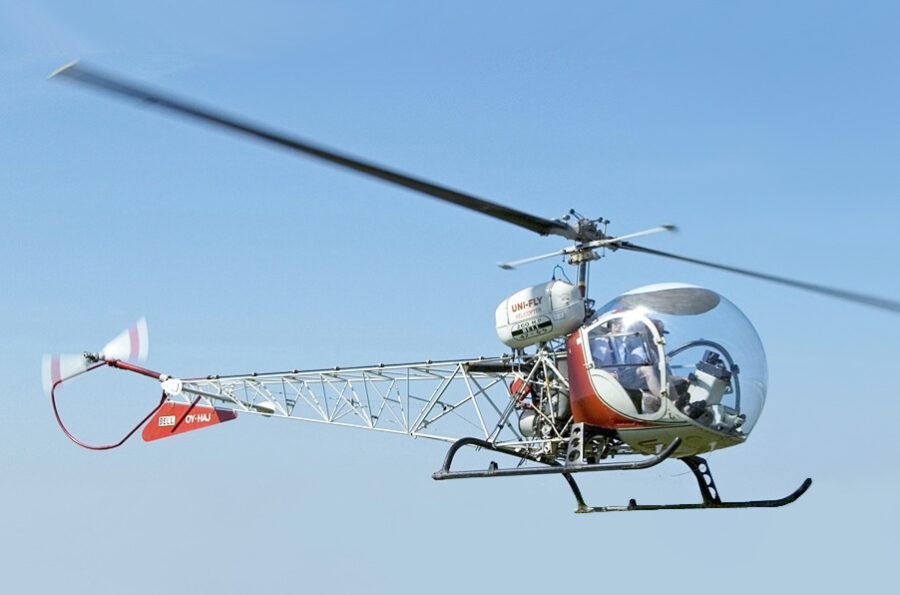

1946 – Bell 74, the first helicopter certified for civilian use
First Turbine-Powered Helicopters
The advent of lightweight turboshaft engines in the latter half of the twentieth century drove the development of bigger, faster, and higher-performance helicopters. On 11 December 1951, the Kaman K-225 became the first turbine-powered helicopter in the world. Two years later, on 26 March 1954, a modified Navy HTK-1, another Kaman helicopter, became the first twin-turbine helicopter to fly. However, it was the Sud Aviation Alouette II that would become the first helicopter to be produced with a turbine engine in 1955.


1955 – Sud Aviation Alouette II, the first production helicopter powered by a gas turbine engine
Helicopters Today
While piston engines are still used in smaller and less expensive helicopters, today’s helicopter operators still prefer turboshaft motors.
Helicopters have come a long way since their first successful flights. Today, helicopters are technologically advanced, often fast and mostly expensive machines used for many different applications such as military, recreational, emergency medical services (EMS), search & rescue, etc.
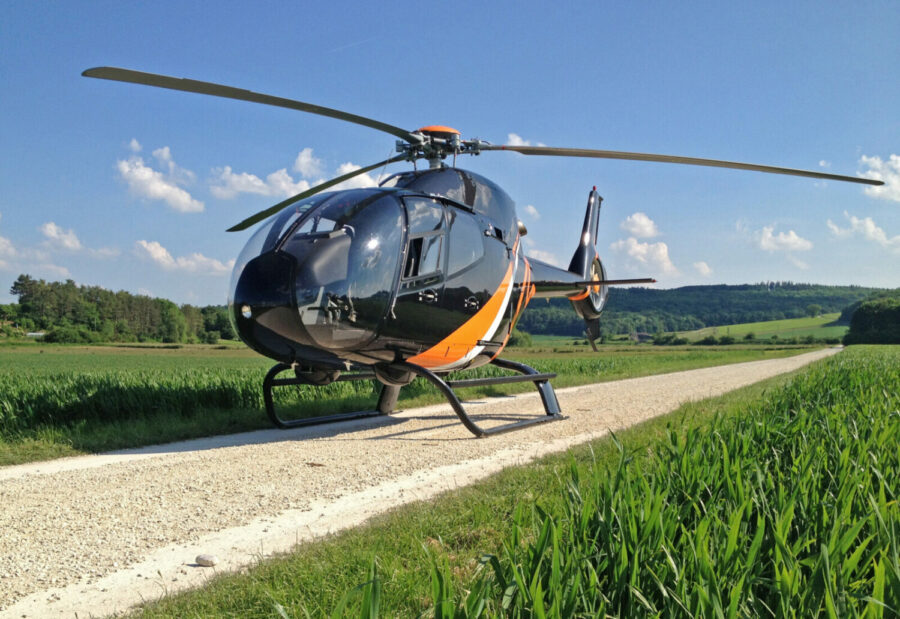

2020 – A modern-day Eurocopter EC-120 Colibri turbine-powered helicopter
Why Were Helicopters Invented and Developed Later Than Fixed-Wing Aircraft?
Helicopters that are able to perform steady hover flight were developed decades after fixed-wing aircraft. This is due in part to the higher engine power density requirements involved in rotary-wing aircraft. During the first half of the 20th century, fuel and engine improvements were a significant factor in helicopter development. The development of the helicopter not only involved the addition of a motor, but also included similar breakthroughs in avionics, material science and control systems.
Conclusion
Who invented the helicopter and when? The history of helicopters is an interesting one. There are many who contributed to their invention, but it was Igor Sikorsky who finally made them practical with his VS-300 in 1939. This led to a series of innovations that eventually culminated into today’s well-known models like the Bell 47 and Sud Aviation Alouette II. Helicopters have come a long way since their first successful flights – who knows what they will be capable of in another 80 years!
To summarize this article, here’s an interesting infographic about the history of helicopters:
